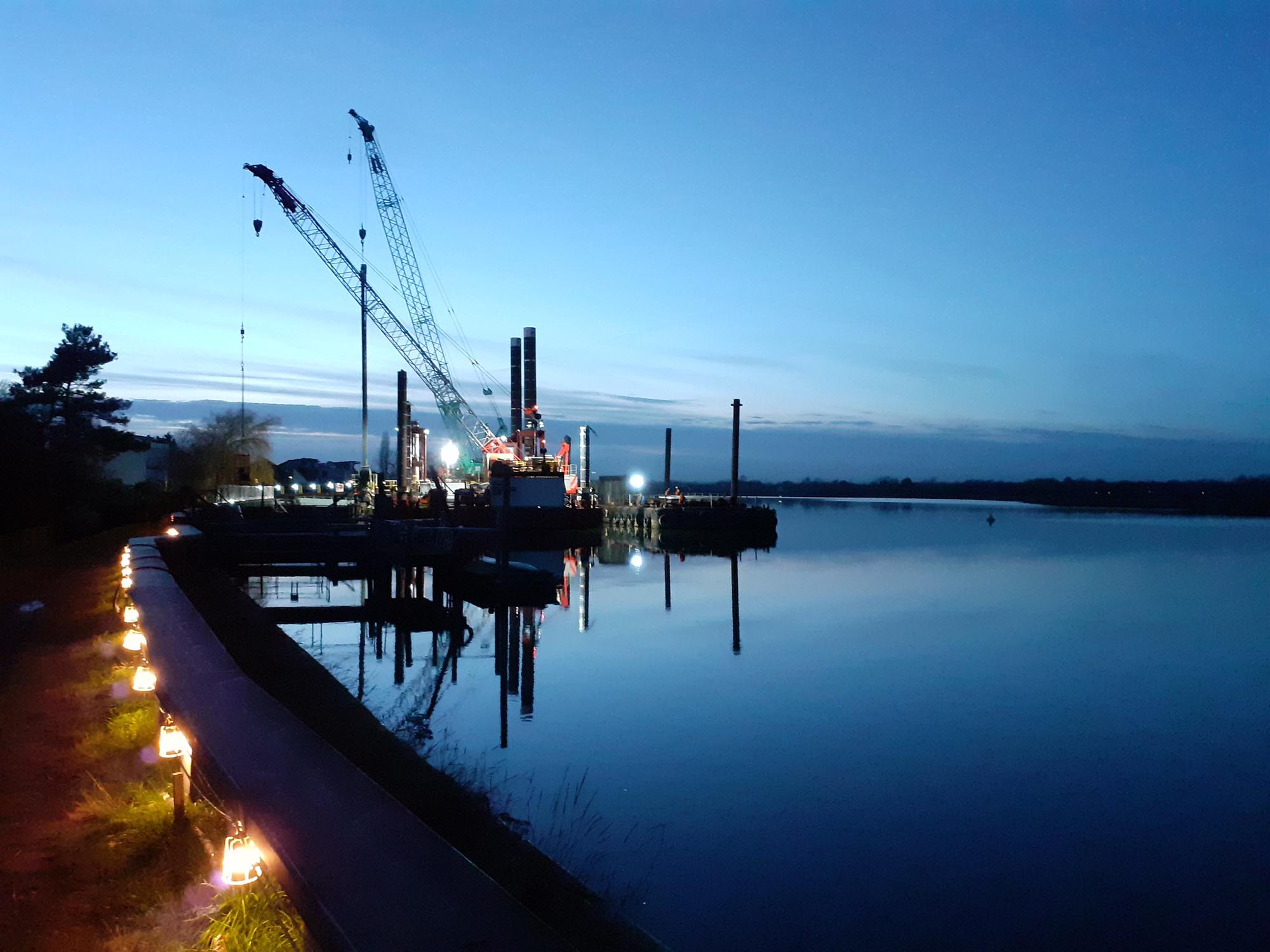Hullbridge
Bank Stabilisation
Sector:Flood & Coastal Defence
-
ClientEnvironment Agency
-
Valuecirca £5m
-
Duration10 months
Pillar: Supply Chain
Working from the water for much of the project, the Jackson team overcame a number of engineering challenges to repair a 40m length of collapsed embankment along the tidal estuary of the River Crouch at Hullbridge in Essex.
The location is classified by the Environment Agency as being at significant risk of flooding and the project to build up the bank and replace the damaged revetments was carried out over a 10-month period.

Jack-up barges
The work required the installation of 102 steel pilings and a cofferdam to provide a safe working environment while the work was carried out.
Access to the site from the land was not possible because of the close vicinity of properties. For this reason, a 100-tonne crane on a 200-tonne jack-up barge standing at the shoreline of the River Crouch was used while piling was carried out.
Some materials were transported on land from the compound to the work site along the embankment footpath using a remote-controlled electric tracked load carrier to reduce carbon emissions.
Access to the site from the land was not possible because of the close vicinity of properties. For this reason, a 100-tonne crane on a 200-tonne jack-up barge standing at the shoreline of the River Crouch was used while piling was carried out.
Some materials were transported on land from the compound to the work site along the embankment footpath using a remote-controlled electric tracked load carrier to reduce carbon emissions.
Carbon champion
Specialist ‘Canewdon’ revetment blocks, designed to absorb wave energy, were used to support and protect the riverside slope.
Jackson worked with supplier Poundfield Precast to produce a number of ultra-low carbon blocks and was named a Carbon Champion by the Institution of Civil Engineers (ICE) thanks to their efforts to quantifiably reduce the carbon emissions associated with this project.
Jackson worked with supplier Poundfield Precast to produce a number of ultra-low carbon blocks and was named a Carbon Champion by the Institution of Civil Engineers (ICE) thanks to their efforts to quantifiably reduce the carbon emissions associated with this project.
‘This project threw up a number of engineering challenges that we were able to resolve with a robust temporary and permanent works solution. The result is a scheme we are all proud of - long may it protect the residents of Hullbridge.’
Stephen Christian, Senior Contracts Manager, Jackson Civil Engineering
Tides
A total of 102 piles were used to make the cofferdam. These piles were then cut down and left in situ forming part of the structure.
As the cofferdam was removed, the team prioritised work to maximise their working windows within tidal movements. For example, they worked down on the foreshore carrying our scour protection when the tide was out before moving further up the bank to cut the higher piles, as they tide came in.
As the cofferdam was removed, the team prioritised work to maximise their working windows within tidal movements. For example, they worked down on the foreshore carrying our scour protection when the tide was out before moving further up the bank to cut the higher piles, as they tide came in.